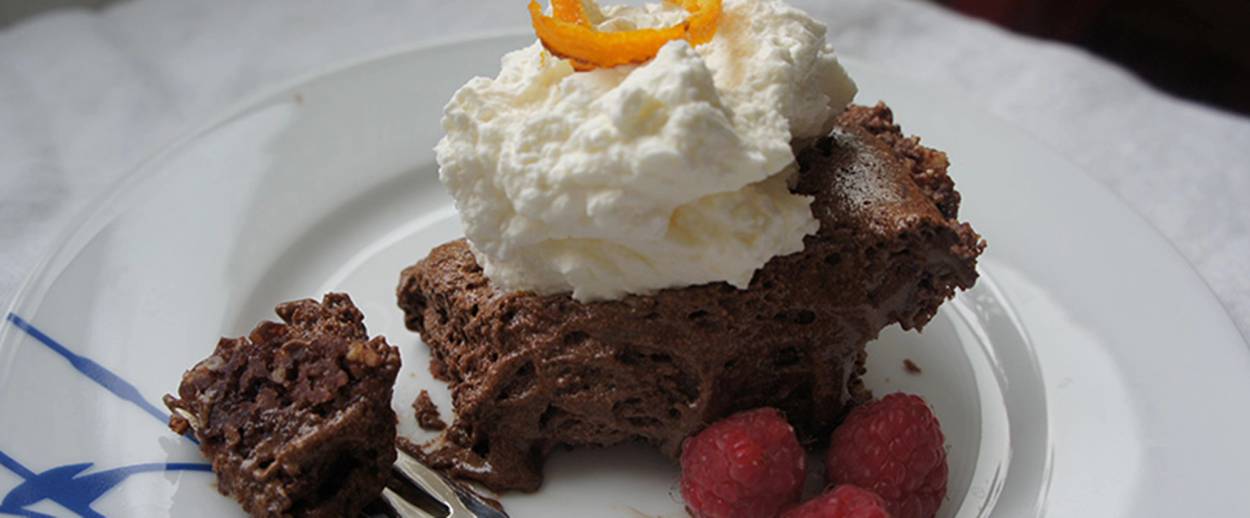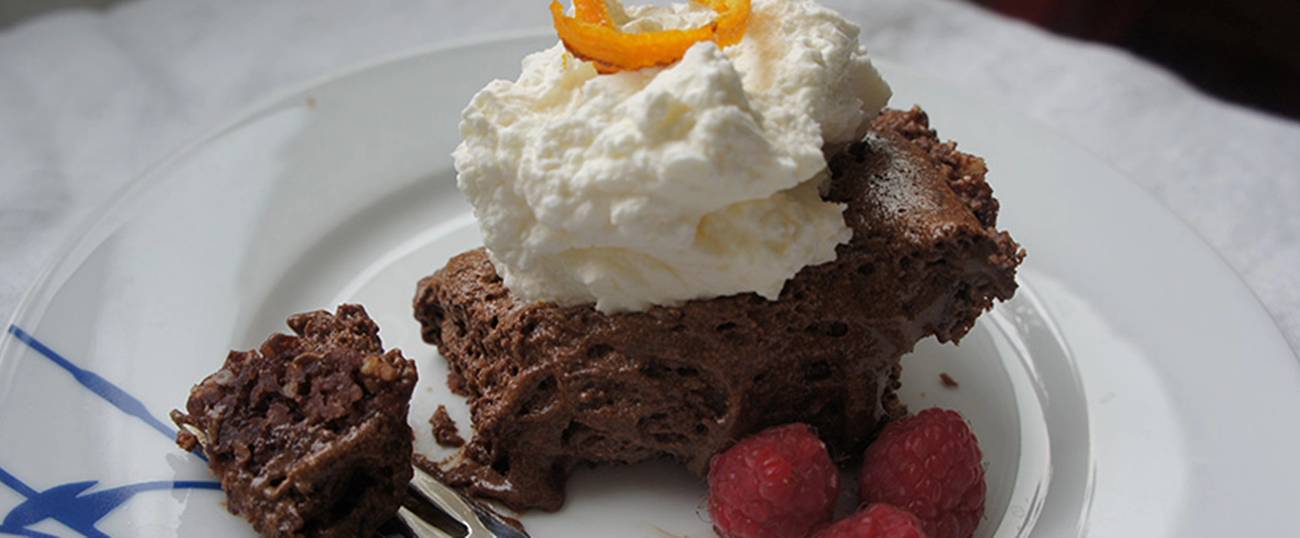How To Make Seder Desserts Your Guests Won’t Believe Are Kosher for Passover
There’s no excuse for serving canned macaroons and packaged cake mixes. These recipes are so good, you’ll serve them all year.




Growing up half-Jewish, I didn’t keep kosher or even observe a week of bread-free eating during Passover. Springtime was more closely associated with chocolate bunnies, marshmallow Peeps, and pastel-dyed eggs than with chocolate-covered matzo. We did, however, happily and dutifully attend a Passover Seder every year at my grandparents’ house where, using the Maxwell House Haggadah, we asked the four questions in English, sang “Dayenu,” and then ate matzo-ball soup, gefilte fish, and something that was allegedly chicken. For dessert, we often celebrated my grandfather’s birthday with a full-fledged, chametz-laden birthday cake, sitting right alongside the pile of matzo at the Seder table. We went home contented, having fulfilled our Jewish obligation to ask questions and eat my grandmother’s food, and went about the rest of our lives, oblivious that there were more traditional ways to eat and commemorate the holiday.
As I connected more with my Jewish roots and began keeping kosher, I eventually had to contend with the week of Passover eating. At Smith College, tucked away in western Massachusetts, although I was lucky to have a small group of Jewish friends and a kosher kitchen on campus, it was hardly the norm to keep kosher-for-Passover for the week. Without an arsenal of Jewish mothers cooking around the clock and with a full load of coursework to keep us busy, we made do, eating leftover haroset, matzo-ball soup, and canned macaroons. You know the ones I am talking about: They taste like coconut-flavored sawdust congealed into sponges. Not exactly the dessert of my dreams—indeed, a dessert of affliction. And so Passover became the unofficial start of my summer diet. It was easy to drop five pounds during this week, because there was very little palatable to eat.
After college, I began spending Passover with a close friend and her large Modern Orthodox family, who graciously welcomed me at their traditional celebrations. And it was during this time period I really had to confront the American-Jewish obsession with kosher-for-Passover packaged products that were disgusting to eat and worse to digest. Lined up along the foil-covered counters of their large, rented Florida getaway sat row after row of boxes, bags, cans, and jars of the kosher-certified food we would be consuming for the week. Instead of dropping five pounds as I had during college, I got a bloated stomach and a lecture from my friend’s grandmother about the importance of prune juice and dried fruit during Passover.
Was this the best way to commemorate our freedom from Egypt—by keeping gastroenterologists in business?
I couldn’t understand the obsession with all these boxed kugel and cake mixes, Passover “noodles” and jelly rings. At some point in our history, the narrative of affliction from the Seder translated into a narrative of culinary suffering for American Jews. But this accepted norm didn’t have to be my reality, and I was determined to find a better way to eat during Passover.
When I began living on my own, I hosted a Seder for my family for the first time and challenged myself to make a matzo-meal-free meal. It really wasn’t that difficult. I made traditional items like gefilte fish, chopped liver, and haroset. And I kept the rest of the menu simple: roasted chicken, a big salad, roasted potatoes, and a flourless chocolate cake. I realized finally that Passover food didn’t have to rely on packaged mixes or egg- and matzo-meal-laden kugels. Instead I began relishing a week of innovative salads and grilled fish.
While I eliminated the excess matzo meal and boxed brownie mix, I still struggled with what to serve for breakfast without the comfort of my morning carbs. I don’t do yogurt or half a grapefruit for breakfast even on my best days. I need a croissant. A bagel. Or perhaps some oatmeal with sliced almonds and honey if I am trying to be “good.” And the thought of Passover “rolls” made from matzo meal and eggs, or those packaged Passover cereals, suddenly makes prune juice seem appealing.
So, breakfast during Passover presented a real conundrum, which is why berry crumble was created. After all, if doughnuts can be considered a breakfast food, why can’t a sweet crumble? I serve it with a nice dollop of Greek yogurt, which somehow justifies this dessert-for-breakfast as a more appropriate and healthful morning food. But it’s just as satisfying as an afternoon treat with a cup of tea or warmed up and served over vanilla ice cream as an actual dessert.
The other way I choose to tackle Passover cooking and baking without the shackles of the kosher aisle of the supermarket is by hunting all year for recipes that are already kosher-for-Passover-friendly, or require little alteration, which I define as substituting only one or two ingredients. My husband and I now host an ever-growing Seder where the meal includes dishes you would see on our Shabbat table all year: marinated cucumber salad, potato kugel, osso bucco, roasted vegetables, and a slew of desserts you would never know are kosher-for-Passover. You won’t find me making a boxed cake mix, stocking my supplies with matzo cake meal, or trying to come up with the ultimate Passover cupcake recipe. I opt instead for simple almond-coconut macaroons drizzled with chocolate and caramel; flourless chocolate chip cookies so good you will want to eat them all year; or a chocolate mousse pie so decadent and rich that you will forget we were ever enslaved to a packaged cake mix.
Shannon Sarna is editor of The Nosher and writes for other food ventures in the New York area. Follow her on Twitter @shasarna.